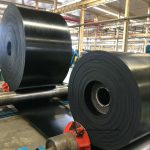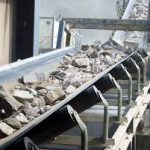How to avoid abnormal shutdown of mining conveyor belt
The belt conveyor is a continuous transportation equipment driven by a motor. It is widely used in the transportation of underground coal and mineral resources. Its working stability is directly related to the development prospects of the enterprise. Once a failure occurs, the production and maintenance must be stopped, which greatly affects Improve the production efficiency and economic benefits of the enterprise.
Belt conveyor is an important transportation equipment for underground mining. It is usually composed of ring-shaped rubber conveyor belt, tail pulley, transmission pulley, roller bracket and other components. Its transmission power is provided by electric motor. The working principle of the equipment is that the conveyor belt bypasses the transmission. The roller and the steering roller form a closed endless belt, which transports the mineral deposits from the mining site to the loading site. In order to avoid belt slippage, it is often necessary to install auxiliary equipment to provide pre-tensioning force and tighten it. There are many on the entire rubber belt. The roller supports it to prevent the belt from sagging due to heavy pressure. When the conveyor is working, the loading equipment places the material on one end of the conveyor belt, and the conveyor belt rotates to transport the material to the other end or a specific location. During the production process, the belt is easy to run. Failures such as deviation, breakage, slippage, belt protection, etc. seriously affect the stable production of enterprises. Therefore, the research of belt stability should start from the following two points. The first is the analysis and elimination of equipment failures. Only when the mechanism of failure is understood, In order to effectively guide the troubleshooting of the equipment and ensure the smooth progress of production, the second is the daily maintenance and maintenance of the equipment. Doing a good job in the daily maintenance and maintenance of the equipment can effectively reduce the failure and extend the service life of the equipment, and improve the stability of the equipment work.
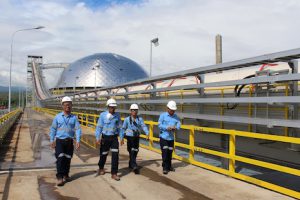
Analysis of the reasons and countermeasures that affect the stability of belt transportation:
during belt transportation, when the belt forces are unbalanced in the width direction or the tension perpendicular to the width of the conveyor belt is uneven, it is easy to cause deviation and cause The cause of this failure can be analyzed from the three aspects of the installation quality of the belt, the quality of the conveyor belt, and the quality of the loading.
When the belt conveyor has a deviation, first check whether the installation accuracy of the equipment meets the requirements. There is no tilt, and then adjust according to the specific reasons for the deviation. When the conveyor belt runs to the same side when it is working, it means that the tension on both sides of the belt is inconsistent. The tension should be adjusted to ensure that the tension on both sides of the conveyor belt is consistent. If you run off to one side, the conveyor pulley installation position cannot meet the requirements. You can move the roller support on the off-track side a short distance in the direction of rotation. The adjustment point starts from the starting position of the off-track, and you can also adjust the conveyor pulley. If the belt is running irregularly, it means that the tension of the belt is not enough. It is necessary to adjust the tensioning mechanism to apply sufficient tension to the belt. In addition, when the installation position of the roller is not accurate, Products such as EP fabric conveyor belts will deviate at the rollers. At this time, the position of the conveyor pulley should be adjusted by adjusting the bolts at the conveyor pulley bearings to change the parallelism and levelness of the conveyor pulley.
When the edges of industrial transportation belts are severely worn, it is easy to run The countermeasure is to trim the edge of the rubber conveyor belt. If the belt joint is not correct, it is prone to deviation for a long distance. The solution is to update the joint to ensure that the transmission direction is perpendicular to it. In addition, when the heavy conveyor belt is bent, it is easy to cause deviation. In the case of relatively light bending, the belt conveyor can be fully loaded and tightened for correction. For severe bending, it should be removed and reinstalled in time;
Misalignment caused by incorrect blanking position: the conveyor belt does not stray when it is empty, but it strays when it is heavily loaded, indicating that the belt body is subjected to uneven gravity and an eccentric load. At this time, adjust the blanking position to make the conveyor belt find Positive, if the blanking point is still off, you need to adjust the position of the blanking guide plate. If the material deviation occurs in the driving drum or the supporting roller, you should remove the material and observe the operation. If the deviation is eliminated, the deviation is due to The object causes the diameter of the place to be too large, causing the tension of the conveyor belt to increase;
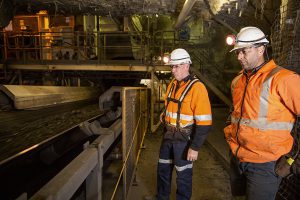
Analysis and treatment of belt slippage of conveyor:
Belt slippage is one of the common faults in pulley transmission. For mine conveyors, the belt tensioning force is generally provided by the heavy hammer tensioning device and hydraulic tensioning device. For conveyors with tightening devices, when the belt slips, you can use the heavy hammer tensioning device to add a counterweight to solve it until the belt does not slip, but the counterweight should not be too large to prevent the belt from receiving too much tension and reducing the life of the belt. For conveyors with hydraulic tensioning devices, the tensioning stroke can be adjusted to increase the tensioning force when the belt is slipping. If the tensioning stroke is not enough and the belt is permanently deformed, you can cut off a section of the belt and re-vulcanize it to drive Severe rubber wear of the drum, excessive load or coal water is also one of the important reasons for belt slip. In response to this situation, replace the drum rubber in time, control the amount of coal, and do a good job of draining the source to prevent water from entering the belt system;
Analysis and treatment of belt protection failures:
Common belt protection failures include accumulation protection malfunction, longitudinal tear protection malfunction and line failure. There is more coal dust in the underground and it is relatively humid. The pile protection thread is easy to accumulate and become damp, resulting in production. Accumulation protection malfunctions, the post should use the downtime to often clean the pile of coal protection thread to make it clean. Due to excessive coal or excessive local coal, the longitudinal tear protection at the unloading point will malfunction. Therefore, two exits at the unloading point Inclined iron plates are installed on the side for protection to prevent the falling coals from causing vertical tearing. The conveyor belts along the line are blocked and are easily damp to cause line failures. The locks along the line should be checked regularly and a desiccant should be placed in the locks;
Analysis and treatment of abnormal noise of conveyor:
When the driving device, roller and idler of the belt conveyor are not working normally, abnormal noise will be emitted. According to the noise, the fault can be eliminated. The specific reasons for abnormal noise are idler eccentricity and coupling The two shafts of the roller are not concentric, the roller bearing is damaged, etc. First, if the roller makes abnormal noise and is accompanied by periodic vibration, the reason may be the uneven thickness of the roller steel tube or the deviation of the bearing hole from the outer circle. Second, the high-speed motor and Deviations in the installation of the reducer can easily cause the coupling to be eccentric and cause abnormal noise. When there is abnormal noise in the equipment, check the cause of the noise in time, adjust the installation of the equipment or replace the faulty parts;
Daily maintenance and maintenance of belt conveyor:
Perform daily maintenance and periodic maintenance. Daily maintenance includes replacement of damaged rollers, inspection of coal baffles at blanking points, buffer bars, inspection of conveyor belt surface, inspection of unloading points and cleaners, etc. Periodic maintenance includes testing of motor insulation , The drum is regularly oiled, the lubrication and cooling system is checked, the electrical equipment is well checked, the belt protection sensitivity test is done, and the preventive maintenance of the replacement of large equipment is done;
Do daily inspections: daily inspections mainly include measuring motor vibration, sound, bearing temperature, checking drum temperature and bearing operating conditions, and checking belt operation. When problems are found, the maintenance time should be used to deal with, strengthen staff skill training, and improve business level , To ensure that the overhaul is in place, and the problems can be solved quickly by themselves, pay attention to scientific research and development, eliminate old processes, gradually eliminate the drive system composed of reducers and combiners, reduce soft start systems, adopt variable frequency drive systems, etc.
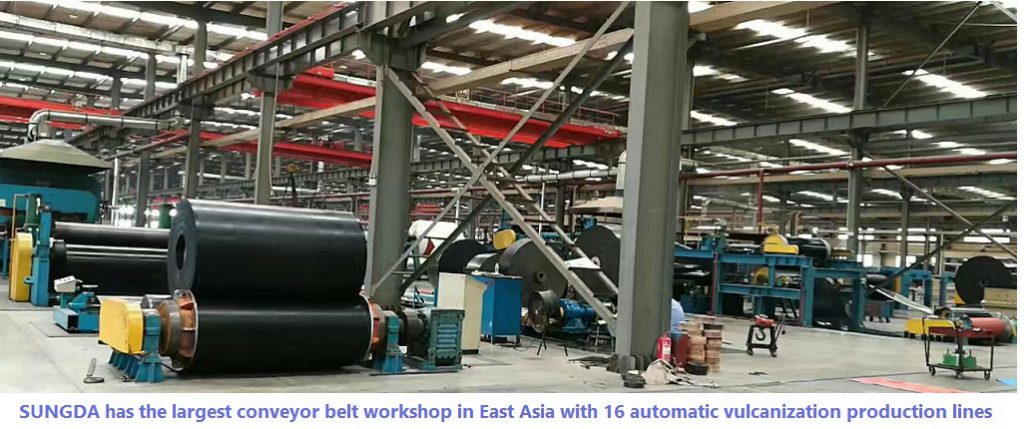
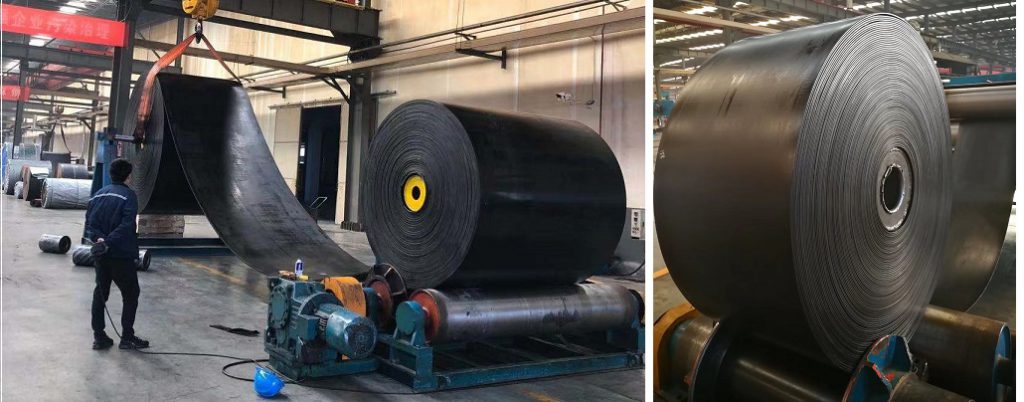
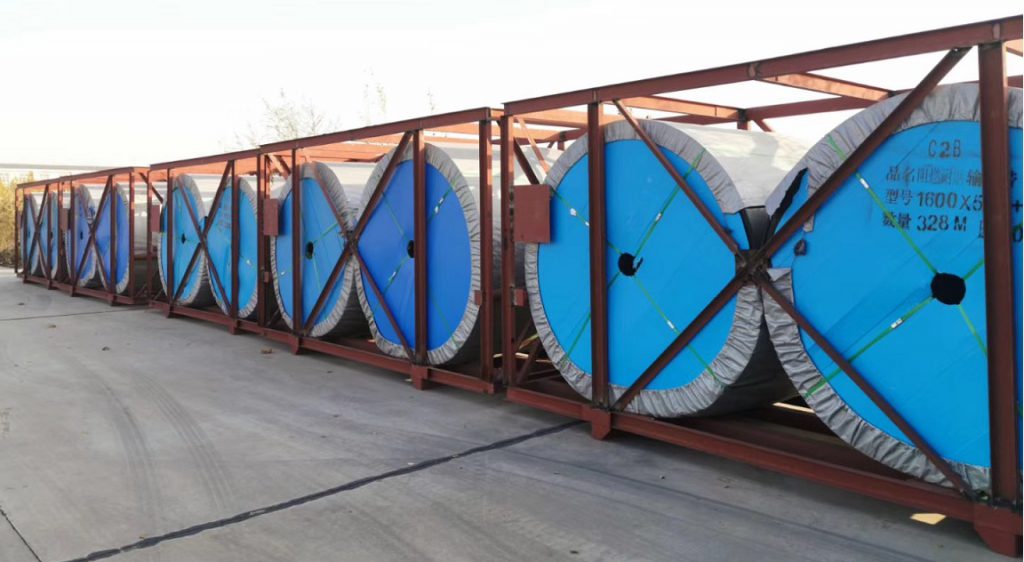
Tags: conveyor belt downtime,convyeyor belt shutdown,mining conveyor belt

